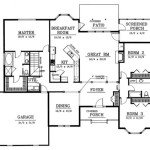Essential Aspects of a Winning Low Income Housing Business Plan
Addressing the critical housing needs of low-income individuals and families requires a well-defined business plan that outlines a comprehensive strategy for developing and managing affordable housing units. Here are the essential elements that should be included in your low income housing business plan:
Executive Summary
Provide a concise overview of your business plan, including your mission statement, goals, target market, and expected outcomes.
Market Analysis
Conduct thorough research to understand the housing needs and market conditions in your target area. This includes data on income levels, rental rates, and the availability of affordable housing.
Project Description
Outline the details of your low income housing project, including the location, number of units, amenities, and design specifications. Describe the type of housing (e.g., single-family homes, apartments, townhouses) and any special features that cater to the needs of low-income residents.
Financial Plan
Develop a comprehensive financial plan that outlines your sources of funding, operating costs, and projected revenue. Secure financing from a variety of sources, such as government grants, loans, and private investors.
Operations Plan
Describe your plans for managing the development and operation of your low income housing units. This includes property management procedures, tenant selection, rent collection, and maintenance. Establish clear policies and procedures to ensure efficient and effective operations.
Community Impact
Highlight the positive impact your low income housing project will have on the community. Describe how it will address housing shortages, improve living conditions, and contribute to the overall well-being of residents.
Sustainability
Consider the long-term sustainability of your low income housing project. Implement energy-efficient designs, use eco-friendly materials, and explore partnerships with local organizations to provide supportive services to residents.
Risk Management
Identify potential risks associated with developing and operating low income housing units and develop mitigation strategies. This includes factors such as market fluctuations, construction delays, and tenant issues.
Exit Strategy
Outline your plans for the future of your low income housing project. This may include options for transferring ownership, selling the property, or seeking additional funding to expand or renovate the units.
By incorporating these essential aspects into your low income housing business plan, you can create a roadmap for developing and managing affordable housing units that meet the needs of low-income individuals and families, while ensuring the long-term sustainability and impact of your project.

Low Income Housing Developer Business Plan Template In A Box

Unlock Success Craft Your Affordable Housing Business Plan In 9 Steps
Business Plan

Creating Opportunities Housing Our Community City Of St John S Affordable Business Plan 2024 The Homeless Hub

An Ecosystem Approach For Building Affordable Climate Resilient Housing Nextbillion

County Seeking Feedback On Affordable Housing Business Plan Lynnwood Times

What Is Affordable Housing Archdaily

Thoughtful Design Can Create High Quality Affordable Multifamily Housing Joint Center For Studies

18 Free Construction Business Plan Templates Google Docs Word Pages

Affordable Housing Network To Present Business Plan For Wellington Country Village Prince Edward County News Countylive Ca








